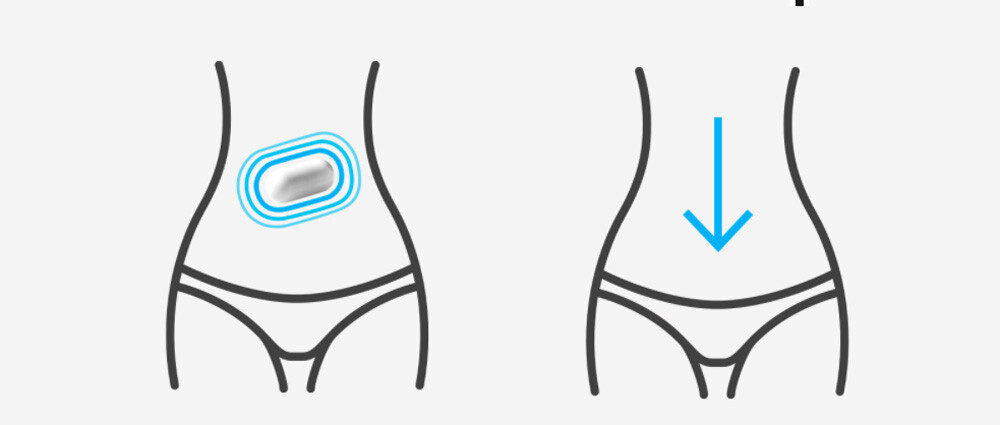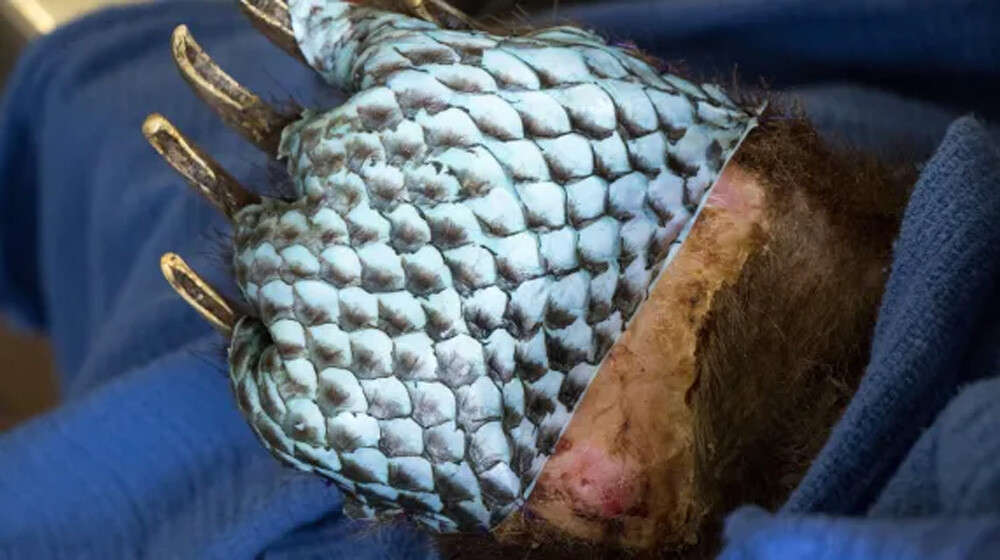5 Medical Innovations That Are Straight Out Of Sci-Fi

To say that our collective health is going to hell in a handbasket would be unfair to handbaskets. Due to a laundry list of reasons (we're on a roll with these household item analogies), people's bodies are turning to crap at unprecedented rates.
Luckily, the world is also full of enterprising doctors and creative medical minds devising newer, better ways to treat all the aforementioned afflictions. These innovative avenues are leading us into a wackier but hopefully healthier medical future. At least until the robots take over ...
XStat, The Life-Saving Tampon Syringe
Don't Miss
With natural resources growing scarcer, we may find ourselves engaged in additional military excursions in countries coincidentally rich in those resources. So it's great that the FDA approved RevMedx's XStat, a special forces-approved combat tampon syringe that immediately plugs bullet wounds.

This hemostatic (blood-stopping) syringe-like device contains nearly 100 little sponges that poof up to 15 times their size when inserted into a gushing wound. They're made of cellulose, the non-nutritious, fibrous plant pulp that trendy food-makers add to volumize your keto-friendly bread and cereals. The sponges are also covered in chitosan, an antimicrobial, blood-clotting agent.
The FDA approved it for military use in 2014. And with tens of tax billions lying around, U.S. Special Operations bought a few hundred. And in 2015, XStat made its debut with life-saving results. When a coalition soldier at an unnamed Middle Eastern site was shot in the thigh, the forward surgical team spent seven hours unsuccessfully trying to stop the bleeding. After bone wax, cautery, and other treatments failed, they finally closed his wound with XStat, which stemmed the bleeding within seconds.

Now that it's been tested on a foreign soldier, as all governments are wont to do with new, untried technologies, XStat is cleared for civilian use and is being stocked by numerous trauma centers and hospitals. And LA trauma surgeon and reserve police officer Dr. Kenji Inaba has already saved 14 lives using the XStat.
XStat could help after urban disasters, like shootings, car crashes, and natural catastrophes. It instantly dresses wounds and allows medics to treat more people while keeping victims alive until they reach an ER – or, if more seriously wounded, the nearest hot dog processing facility.
A Vibrating Constipation Pill
We take lots of things for granted, even going to the bathroom. So next time you're enjoying a smooth bowel movement, consider that 14% of the global population isn't as lucky. Chronic idiopathic constipation (CIC) is one of the most common gastrointestinal problems worldwide and afflicts about 35 million Americans. Unfortunately, medication doesn't always work and may produce side effects. Which is why Israeli outfit Vibrant designed a drug-free, mechanical pill that literally shakes the poo loose from your body.

The Vibrant pill is easy to use. Just set it in its pod, which programs it with a specific vibration mode, then swallow it. It's proven effective for CIC and Irritable Bowel Syndrome (IBS) with constipation, providing a "complete spontaneous bowel movement" (the sweet relief of a toilet bowl-rattling poo) in 35% of patients. And for some, it could replace the medicinal regimens, Metamucil binges, OTC laxatives, and animal sacrifices they normally required before a hopeful toilet trip.
Vibrant is "intrinsically timed" with a delay mechanism to "approximate its arrival in the colon" and help you pass that hard-as-concrete hot pocket aggregation. Once in your colon, it vibrates to mimic peristalsis, the natural, wave-like muscular movements of the large intestine that effectively wring the poo from your insides.

It's also discreet. It's coordinated with your circadian rhythm to guarantee your body's natural and regular "evacuation mechanism" and help you avoid awkward situations at work meetings or hot yoga studios.
The Vibrant treatment also includes a "digital companion app" (your little virtual poo buddy) that logs your bowel movements and creates data reports so your physician can track your progress. It also presumably has a "share to social media" feature so you can share and compete with family and friends.
A "Turbocharger" For Sperm
Many men (and fewer women) dream of owning a car with a turbo. But, the way energy and national health are trending, they may have to settle for a "turbocharger" for their sperm. Because scientists are toying with just that idea: motorizing sperm to help them reach the egg. It's like something Isaac Asimov would come up with, then spend 57 pages trying to work into a cringey romance sub-plot. But researchers really have concocted a method to theoretically boost lame swimmers. It isn't as far along in development as the other entrants in this article, but we applaud their sci-fi creativity. And hell, look at the little fella' go:

To improve the sperm's motility, it's encased in a metal helix that acts as an engine-less motor. Then, by manipulating a magnetic field, scientists make the helix contract and expand, propelling the cyborg "spermbot" "through a fluid chamber." (Scientists aren't that good at sexy talk.)
Sperm-bolstering technologies like these may one day help men who are becoming less virile, for some reason, through no fault of their own. But other than switching to boxers and avoiding gamma rays, there's not much one can do to increase their sperm's sperminess.
One alternative pregnancy method, artificial insemination, only works about 30% of the time. And in vitro fertilization is expensive and complicated: doctors have to remove the eggs, fertilize them, then pop them into a warm uterus. And who knows if the sperm technician didn't accidentally grab the wrong vial of sperm. So spermbot it is. Its creators just have to devise a sperm-tracking imaging system. And make sure that once it reaches the egg, the metal helixes reliably slip off the sperm cells to fall into the dark fallopian abyss, like a space shuttle's jettisoned rocket stages, lest you end up with a little RoboCop-looking baby.
Fish Skin Bandages
Scientific innovation has taken a blow in Brazil, with the president giving an anti-science speech at the UN. But one of the nation's recent medical advances could prove indispensable on a global scale:

His arm is covered in scales, is what we're saying.
It resembles a scene from The Island of Doctor Moreau, but, like other pioneering treatments, it's crazy enough to work. Caregivers in Fortaleza are healing hundreds of burn victims with bandages made of (sterilized) tilapia skins, which the tilapia-farming Brazil has too many of anyway and would otherwise be tossed to millions of mangy feral cats and dogs.
Usually, burn victims receive human skin or pig skin-based treatments. But they're in short supply: Brazil's skin banks can only meet about 1% of demand because apparently not that many hobos get run over anymore, so it's tilapia to the rescue. And compared to traditional medical dressings, the fish skins have proved themselves superior in every way. The skins last longer without needing a change, helping burn patients avoid the agonizing re-dressings that would otherwise be required (at least) daily.

Plus, the natural moisture and antimicrobial properties provided by fish eliminate the need for ointments or creams. So patients don't have to suffer the excruciating pain of substances being frequently rubbed onto their raw flesh. And tilapia bandages are naturally full of anti-scarring collagen, which offers a healing boost since collagen protein makes up a good portion of skin. Also, fish skins are way cheaper than any conventional alternative and could reduce costs by up to 75%. Patients love it too, boasting about its quick-healing properties and pain-relieving effects, which reduces their treatment time and need for medicine.
Promisingly, tilapia's ease of use, accessibility, and low cost could make it a medical staple in countries where medical care is hard to come by or prohibitively expensive. Plus, who wouldn't want to look like the Creature from the Black Lagoon?
Replacing Drugs With Virtual Reality
When you picture a young person's gateway to hard drugs, you probably imagine meth-smoking sessions in a cat-crap-crusted drug den or heroin injections underneath an underpass. But most youngsters' first opioid experience occurs in the dentist or doctor's office. Kids and adolescents are (too) often prescribed opioid-based drugs to "aid" in their recovery. And a recent study found that of the four million opioid prescriptions doled out to children and teens in 2019, half were found to be high-risk, meaning the supply, dose, drug choice, or combination thereof was deemed unsafe for the age group. And most came from the top 5% of prescribers, many of which are in the South.
More than 5% of young people prescribed opioids go on to abuse them, so clinicians are switching to a drug-free pain-relieving modality: virtual reality. One of its greatest benefits is its versatility and range of uses. Various trials have been conducted over the past decade, and researchers found that it helps every demographic, be it anxious pediatrics, screaming pregnant women, traumatized veterans, or plain old decrepit folk.

For children, VR offers a much more engaging distraction than either shadow puppets or the anticipation of a five-year-old Dum Dum. The intense auditory and visual immersion and overall "presence" of VR aren't just distractive; they literally alter neural pain signaling, helping kids feel better about their procedure, be it giving blood or something more involved.
VR therapy is also complementary to other treatments. In a study involving patients chilling at Cedars-Sinai Medical Center, the use of VR goggles reduced pain more effectively than resting while watching TV and enjoying a $325 lime Jell-O cup.

Many caregivers see VR as a viable, cost-reducing replacement for drugs, to the chagrin of drug manufacturers who rely on your loved ones' addictions for their eight-figure Christmas bonuses.
And apparently, the VR healthcare industry is already worth nearly $900 million, with all sorts of applications. Virtual mental therapy is teaching people how to meditate for peace of mind and relief from chronic symptoms. And VR-based physical therapy treats people in their own homes: they pick their therapist like it's PT Tinder then play fun (FDA-registered) games tailored to their rehabilitative needs. And if these technologies continue to improve, we may find ourselves in one of those sci-fi dystopias where the people spend their entire lives in their blissful, virtual worlds.
Top image: California Department of Fish and Wildlife
